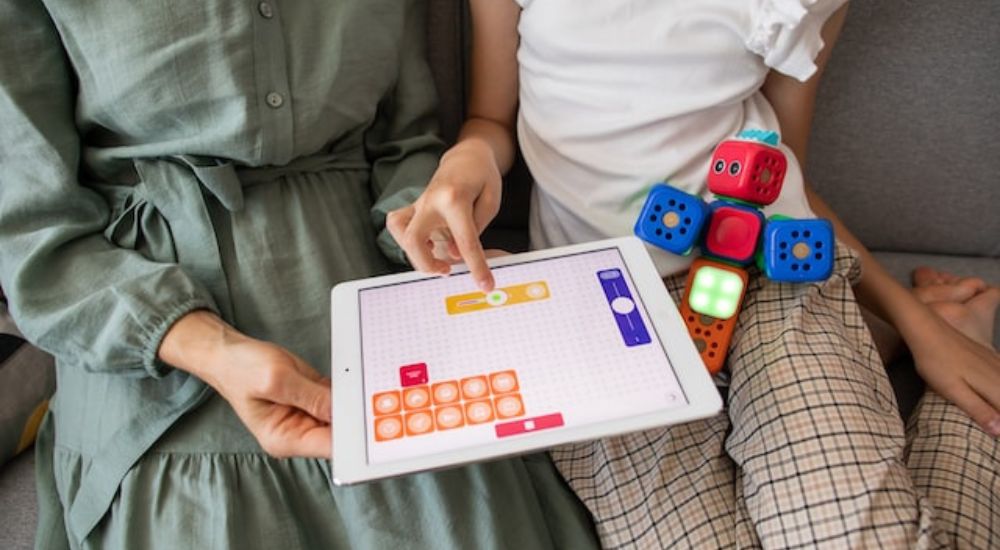Gaming is one of the most popular hobbies in the world. A recent survey by Statista shows that video gaming is among the 5 most popular hobbies in the United States. And it’s easy to see why: games are designed to be fun and engaging, and they’re awesome at it. Despite that, games are seen as a double-edged sword by many.
Amid the controversy, the demand for engaging and effective learning experiences continues to grow, and the use of games to aid in education has emerged as a promising solution. Educational games, as they are called, are designed to teach a wide range of subjects and skills while offering a fun and interactive way for kids to learn and retain information.
With so many cool features and use cases, their demand has grown over the last few years, prompting many to wonder how to make educational games.
In this article, we will give you a bird’s eye view of the game development process, some tools (or game engines) to help you build an educational game, some mechanics to implement in them, best game design practices, and some statistics on the relationship between video games and young children.
Exploring Educational Game Design: Creating Engaging Games with Educational Mechanics
If you’re interested in creating your own educational games, there are various tools and practices available to help you in the process. One option is to explore websites that enable you to create games without the need for extensive game development knowledge. These platforms often offer game templates with educational mechanics that you can customize according to your preferences.
Additionally, some game development companies specialize in creating educational games for kids and students, making it easier for teachers to find suitable resources. By opting for these tools, you can focus on crafting a game that is not only fun but also serves as a valuable learning tool.
For instance, you can design word games, multiple-choice quizzes, or puzzle games that students can play on their mobile devices. This way, students don’t need to conduct fruitless searches for appropriate educational resources, as the games you create will cater to their learning needs and provide a more engaging alternative to traditional teaching methods.
How to make educational games: getting started
Before actually starting the design and development of your game, there are many things you need to consider:
Choose a game platform
A game platform is an enclosed system that provides a player experience. There are many elements to it: input controls, graphics, the game client itself, the hardware on which it runs, and graphics. As examples, we can cite consoles, personal computers (PC), and smartphones (mobile).
Despite the ability to choose between many, you will most likely want to build an educational game for mobile players – as of 2020, around 67% of all children aged 5 to 8 had their own smartphone.
That said, you could choose any and still be successful, especially with virtual reality (VR) getting more immersive and interactive by the day. After all, the choice is entirely yours.

Keep in mind, however, that each game platform has its own set of pros and cons. Games developed for PCs, for example, will often require large screens and long download times but can be very complex and colorful. Mobile games, on the other hand, have to deal with smaller screen size and limited controls, but can be played from anywhere – as long your smartphone has enough charge.
Well, you can always opt to create games for multiple platforms later on, but it will incur additional development costs.
Development approach: DIY or working with professionals?
Creating games from scratch, while an interesting experience in and of itself, is known to be arduous and very time-consuming. There are two approaches when it comes to solo development: DIY or custom development.
DIY games are special in that anybody can create one through the use of specialized apps to create simple games. No, you don’t need to have programming knowledge for this approach to work.
However, those DIY game makers often have few design choices for a game, and implementing custom features is often impossible. As a result, games created with these apps are frequently very similar to each other, making it hard to stand out from the crowd. Data privacy is also a concern when creating games with DIY app makers.
Custom development is the other, but tougher approach. It comes with the biggest of benefits: you can create and customize your educational game exactly the way you want it. No matter how intricate your educational game idea is, it’s possible to bring it to life with custom development.
You can either develop it on your own, which will require months of dedication, or take the easy, pain-free way out: hiring a game development studio like Main Leaf.
Tools to create simple educational games
Deciding which tools to use to develop your title is also a hard task – there are so many of them!
For the DIY approach, consider names like TinyTap, an online platform for educational games, Flippity, which lets you turn a Google Spreadsheet into simple games, and Kahoot, another online platform with more than 60 million projects to explore.

If you’re looking into going for a custom project, then you will likely end up using either Unity (the most popular engine, which uses the C# programming language) or Unreal Engine (which uses C++ instead), two of the most popular game engines out there. Another option is Construct 3, a visual programming tool that has recently added support for multiple platforms.
For more information on how to get started with the Unity game engine, make sure to check our other article.
Best game mechanics to implement in educational games
One of the most important things in game design is to decide how the player – in this case, a child – will interact with the game. How many actions will they have to take? How so and how often? Some examples of game mechanics to use in educational games are as follows:
- Puzzles: usually done best when paired with an adventure, it can work as a standalone mechanic too. They are great for learning games that mainly deal with visual elements, such as colors and animals;
- Quizzes: in this mechanic, the game will ask a question to the child, prompting them to choose an option or type the answer. After all the answers are in, the game will tally the score and give them the answer for the questions they got wrong. Quiz games are a great way for children to consolidate their knowledge and apply it in a fun and engaging way;
- Creating: this mechanic is common in educational titles that require the player to build something (usually a house, a kingdom, or even a rocket). The child earns progress by completing learning lessons and answering quizzes correctly. They can be useful even if they don’t offer lessons, because they’re great at helping children develop their strategic thinking skills and, in some cases, risk management and collaboration;
- Merging: merging games are among the easiest to create, and they can create fun times for children. In educational merging games, kids can learn a lot of basic/fun information about the world by just trying to merge various elements. One of the coolest examples is Little Alchemy 2, which contains an encyclopedia for all in-game elements;
- Connecting: these games involve connecting elements or concepts together. Like creating games, connecting titles also helps kids develop strategic thinking, analytical skills, and pattern recognition. One such example is Flow Free, which currently has over 5500 levels to beat in varying difficulty levels.

What to consider when developing an educational game?
One of the best ways to have a better shot at creating a successful product is to follow the current best practices in the industry. Unsurprisingly so, this rule is valid for educational games as well. To help you out, we have collected some of the best tips to develop an engaging educational game:
- Make your game as fun as possible: games are supposed to be a fun experience, and educational ones are exempt from this. If children don’t find your game interesting enough, why will they bother playing it? Making your educational game fun should be one of your top priorities;
- Pleasing kids is important, but so is pleasing their parents: as parents often have access to their children’s devices and monitor them while they’re gaming, it’s paramount to create a game that parents find appropriate (and useful!) for their child;
- Let them create something: by allowing your game to be a creative outlet for children, they will be more tempted to keep playing it. For example, what if they could create their own puzzles and share them with friends?
- Give them options: one of the best things about games is that we can take on a challenge in many different ways. In RPGs, you can approach a boss fight using magic, steel, or arrows (and many more depending on how complex the game is), allowing you to get creative sometimes. More complex educational games can also follow this trend;
- Minimize boring details: kids should be able to get right into the action in educational games. However, you will also need to introduce new concepts and explanations now and then. To make this more enjoyable, create graphs to present statistics, videos to explain harder concepts, and keep it simple, but interesting;
- Follow the school syllabi: depending on your target audience and what your game is trying to teach, it’s good to use the school syllabi as a reference. It helps you keep the learning experience organized, and may even coincide with whatever kids are learning at school, making your game a tool for students to cement their knowledge.

Statistics: why develop an educational game for kids?
Even though game releases are mostly geared toward teenagers and adults, children also LOVE games. Did you know that gaming is the top interest among boys aged 8-15? According to GWI, more than 70% of kids in that age range play video games most days. For girls, the figure is lower, but it still sits at a staggering 64%.
The Common Sense Media Census 2020 also has some interesting data to show:
- 72% of US parents think games can help their kids learn more;
- Two-thirds of children aged 5-8 have a smartphone, spending an average of 3 hours a day on screen media;
- Most parents have reported an increase in their children’s creativity following the introduction of digital media.
Main Leaf: educational game development made easy
As you have seen in this article, educational games are truly a force to be reckoned with. Many say they are education’s greatest ally yet.
For students, it represents a better, more engaging way of learning new concepts and solidifying existing ones. For teachers, educational games allow them to assess student progress and identify subjects where additional classes may be needed.
Their development, however, is a beast of its own size. Even though creating games can be a fun experience, it’s often very time-consuming, and it can take many months before you start seeing your game come to life.
If you want a fully customized educational game in your hands while doing little-to-no work, then hiring an experienced game development studio is the way to go.
At Main Leaf, we create enjoyable games on demand at blazing-fast speeds. Our roster of 70+ talented, passionate employees is ready to take on the development of your upcoming educational game.
With over ten years of experience in the game industry and dozens of finished projects, you can’t go wrong by choosing to work with us. Make sure to request a game quote right now, and we will get back to you within 24 hours!

